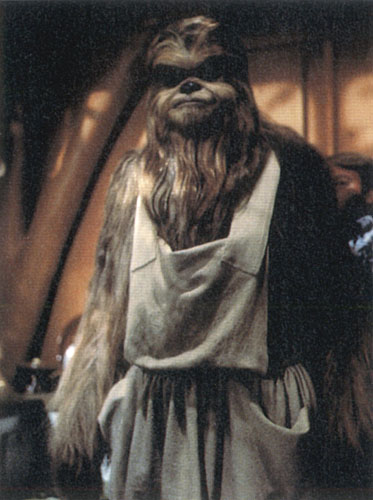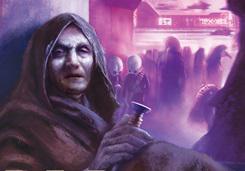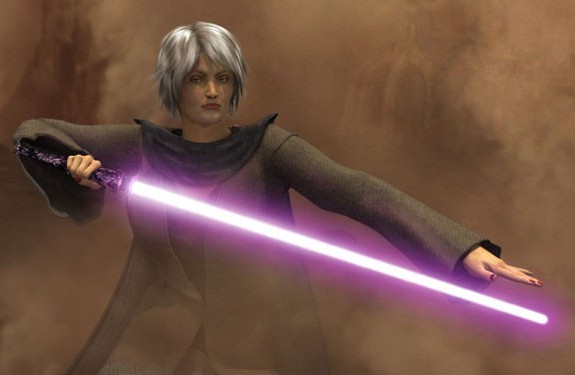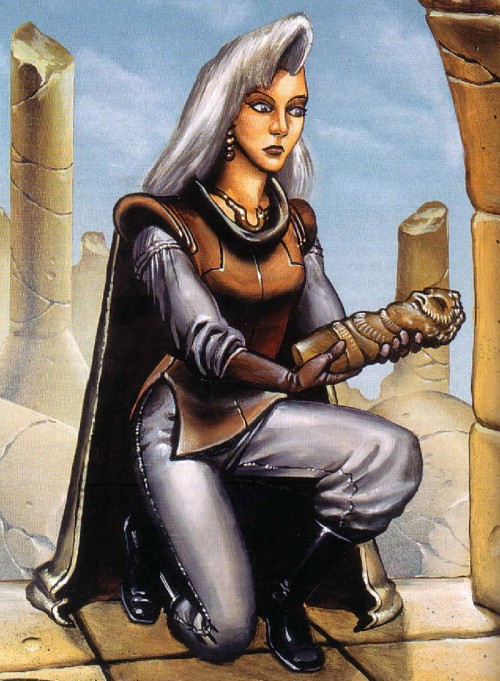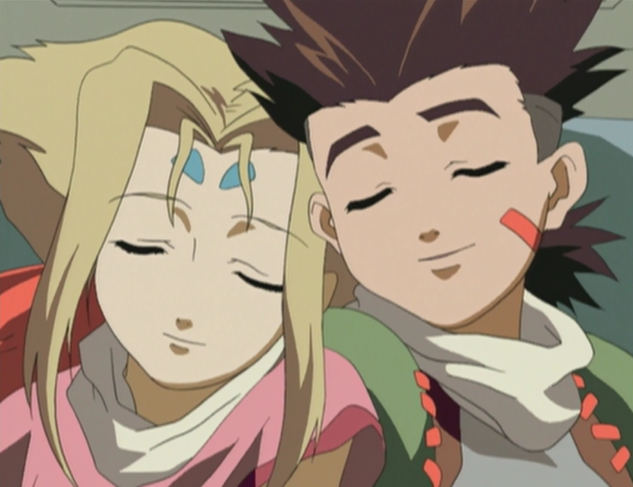Welcome back, readers! Once more we fly into the breach to learn about Star Wars’ forgotten heroines!
I know I am repeating myself here, but the fact that Disney ditched these women still astounds me. After forty years of build-up, the new owners for this beloved franchise cast aside characters they could have used in new stories. Even if they declared everything after Vision of the Future non-canon, there would have been enough leftover material to spawn new books, several dozen movies, and more than enough subject matter for TV shows like Rebels.
Every time I sit down and really think about it, I look sideways at Disney and say, “Why? Why waste all of that good material? You had a gold mine here, and you shut it down because….well, why did you shut it down?”
Several people have theories about why Disney dropped the old EU, but I won’t bore you with a recital, since these posts are supposed to be relatively cheerful. I already alluded to my own opinion in the post about the final season for Star Wars Rebels, which has not changed. I doubt it ever will, sadly. But the fact is that what’s done is done, and there is no point trying to alter it.
Yes, I know there are people petitioning for Disney to redo Episode VIII. While I sympathize with them, since Carrie Fisher is (hopefully) residing in a galaxy far, far away now, there is no method by which that film can be redone while including her. Disney has already signed an agreement stating they will not use CGI to bring Leia back into the franchise, and even if a cast and crew could be found to remake the rest of the movie, working in Fisher’s existing scenes to a new movie would take a lot of work. It might not result in a good film, either.
More to the point, there’s no way in Mustafar that the kingmakers in Hollywood would let a remade Episode VIII into theaters. Most of the “important people” in Tinseltown have hated Star Wars and the majority of its fans since the first film came out, and many will go on hating it and us ‘til the day they die. I’m sorry, but there’s just no way around that or The Last Jedi. The only things which those of us who dislike the new films have got are the original movies, the original EU, and stories by some bright creators who want to do homage to the original movies.
With that in mind, let’s go back to the listing I started yesterday. One of the best ways to keep the original Star Wars alive is for its fans to show the old EU to new readers and prospective fans, which is why I wrote these two posts. So, without further ado, let’s look at some more of the leading ladies from the original SW timeline:
Jan Ors: Jan Ors was a Rebellion operative/spy who reported directly to Mon Mothma. While in a Rebel asteroid base, she was one of several Rebels captured – but not executed – by Imperial Stormtrooper and future Jedi knight Kyle Katarn. Although on opposite sides in the war, Kyle immediately felt a connection with Jan, as she did with him. This led him to spare her life and the lives of most of her compatriots. It was after this act of mercy that Kyle learned his father, Morgan, had been killed in a “Rebel” strike on their homeworld of Sulon.
At first, this made Kyle extremely hateful toward the Rebellion, including Jan and her friends, whom he met again before he was to enter Imperial service fully. It was during a brief fight with Ors’ companions that Kyle was to have his eyes opened to the truth; during the conflict, Jan name dropped Sulon, catching Kyle’s attention. She was able to prove to him that his father – who was a Rebel sympathizer and supporter – had been killed by the Empire, not the Rebellion.
Jan Ors and Kyle Katarn
Kyle immediately defected after this, helping Jan and her fellows escape back to the Rebellion. There he became an agent who specifically answered to Mon Mothma, running missions she would trust to no one else. Kyle soon proved to be a one-man wrecking crew, carting up to six or more heavy weapons during his missions. Jan accompanied him on some of his assignments, one of the most famous being his operation to stop the Empire’s Dark Trooper program. In that event, she was his “mission officer.” This basically meant that she sat in front of enemy lines and, after giving Kyle needed info, watched with a bag of popcorn while he cut a swath of carnage through enemy ranks.
From what I have read, we never got to see Jan run her own missions very often. Usually, when she appeared, it was because she was being rescued by Kyle. This wasn’t because she was an incompetent agent and couldn’t handle her own; the reason she needed rescuing so often was because everyone who wanted Kyle Katarn knew the best way to get him angry was to threaten or “kill” Ors. During her own missions, it seems, Jan didn’t have near as much to worry about. She was a good shot and a capable fighter – at least where the average Imperials were concerned.
Throw in Dark Jedi, though, and she was out of her depth. On those occasions she very wisely did the sensible thing, which was to sit down, shut up, and pray Kyle would find her before the bad guys decided she was more trouble than she was worth. Because he was Force-sensitive, Kyle always managed to find her, despite the fact that her friendship with him was what usually got her into these messes.
None of this is what led Jan to turn down Kyle’s repeated offers of marriage, though. No, she turned him down because they were both fighters involved in the myriad wars which afflicted the Star Wars galaxy following Return of the Jedi. Any day could be their last, and Jan didn’t want to have Kyle for a brief space of time only to lose him a day, a week, or an hour later. It is also probable that she knew that, whenever she was captured or appeared to “die,” Kyle skirted dangerously close to the Dark Side in order to rescue/avenge her. If she actually died in combat with an enemy, the last thing Jan wanted was for her death to make him into one of the monsters they fought so hard against. Better they stayed friends; that way, whatever happened wouldn’t hurt as much as if they were man and wife.
Since Kyle was originally one of the agents who stole pieces of the plans for the first Death Star, there is no compelling reason explaining why he and Jan were not included in the film Rogue One. The writers could have written the story so that Galen Erso was Galen Ors, making Jyn the twin or older/younger sister of Jan Ors. If they had gone that route, the story would have been twice as interesting and complex as it was; remember, in the original EU, Jan worked directly for Mon Mothma. The film writers could have maintained this for the movie; in order to protect Jan from general interest, Mon Mothma could keep the younger woman as her private agent.
It would have added extra tension for Jyn’s story, too. Say the sisters were both “dumped” by Saw Gerrera, but one returned to the Rebellion (Jan) while the other rebelled in her own way (Jyn). Throw Kyle into the mix to play off of the wayward Cassian Andor and Jan, and the writers have got a boiling kettle of emotions to play with. Then, at the end, Jan and Kyle are the only members of the Rogue One team to survive the mission, emailing the plans to Leia moments before hightailing it back to Yavin for their next assignment. Boom, you have material for more fill-in movies starring Jan and Kyle as they deal with the aftermath of the Rogue One mission and Kyle’s Jedi adventures. It’s a win-win all the way around.
But the new guys didn’t do that. Bummer.
Mallatobuck: Mallatobuck is here because I do not know if she survived the switch to the new timeline. In the original EU, Chewbacca married Mallatobuck several years before A New Hope. Together they had one son, Lumpawarrump (yes, that is really his name, and yes, Lowbacca was a better choice). I do not know too much more about her, having not encountered her anywhere outside my New Essential Guide to Characters. I understand she was in the less-than-appealing Star Wars Christmas Special, but really, that show was not her fault. If, as I suspect, Mallatobuck did not make the new timeline’s cut, we are down yet another interesting character.
Vima-Da-Boda: Descended from the famous ancient Jedi Nomi Sunrider and her daughter, Vima Sunrider, we first hear about Vima-Da-Boda in Kevin J. Anderson’s Jedi Search. A Jedi from the pre-Clone Wars Order, Vima went mad after her own daughter fell to the Dark Side. She ended up in the spice mines of Kessel, where she met and gave rudimentary training to the future maverick Jedi Knight Kyp Durron. It was apparently enough for the kid to pull off mind tricks on the people running the mines.
Somehow, Luke or one of our other heroes found Vima in time to solicit her help fighting the reborn Emperor Palpatine (that part is complicated). Later on she became an instructor at Luke’s new Jedi Academy, seemingly recovered from the despair-induced madness she suffered when she lost her daughter.
The old EU was initially more flexible about Jedi breaking the ban on marriage before the Purge than the new one is. Corran Horn, as we saw yesterday, was descended from a long line of upstart Corellian Jedi. New Jedi Knight Kam Solusar’s father, Jedi Master Ranik Solusar, caused a real upset in the old Jedi Council when he married and fathered Kam, who was old enough to run off into Wild Space rather than die in the Purge or become a Dark Side follower of Palpatine.
And during the years between the Jedi Purge and the Rebellion, there were surviving Jedi like Kanan Jarrus who just plain ignored the ban because it did not matter any more. All of this makes Vima’s descent from a long line of Jedi women rather unsurprising. It was actually one of the things I really liked about the old EU; by the time of the Purge, Jedi were practically banned from marriage. But when Luke’s new Order came on the scene, they could break with that ban because, like the original Jedi Knights millenia ago, they were starting almost from scratch.
I would have been REALLY happy if the writers had kept this aspect of the original EU for the sequel films. It is still mind-boggling to me that they wiped out Luke’s new Jedi Order prior to TFA. What would be wrong with having new Jedi from the books Force-jumping out of drop ships into the melee on Takodana? The writers could have gotten Kyle Katarn, Corran Horn, Kam Solusar, and lots of other cameos into that film and Episode VIII easily in that manner.
But they didn’t do it. *Sigh.*
The Dark Woman: This Jedi, who wielded a purple lightsaber like Mace Windu and Jaina Solo, was so devoted to the Force that she renounced her very name in its service. A Jedi Master, the Dark Woman trained Ki-Adi-Mundi to Knighthood but failed to take care of future bounty hunter Aurra Sing. Her inability to train Aurra, while not entirely her fault, made her unpopular with the Jedi Council.
Nevertheless, two years after the Battle of Naboo, the Dark Woman took over the training of A’Sharad Hett, the son of the great Jedi Knight Sharad Hett. A’Sharad had been raised among the Tusken Raiders of Tatooine and was Ki-Adi-Mundi’s apprentice until he accidentally brushed the Dark Side. At that point, the Dark Woman stepped in and took over his training.
I do not know how things ended for A’Sharad – I hope he lived to meet Luke at some point in the old EU – but I know that the Dark Woman died on an Outer Rim world shortly before the Battle of Yavin. Rumor has it Mara Jade was the one who located her, but it was unquestionably Darth Vader who killed her. Aurra Sing must have been disappointed, since she had already accepted a contract on the Jedi Master’s life just before Vader found the Dark Woman. Sing joked she would have killed her former master for free, since she was still smoldering over the woman’s perceived abandonment of her years earlier.
The Dark Woman is here primarily because I do not know if she made it into the new timeline. Apart from the fact that she is interesting on her own, I would really like to know if her last apprentice survived the Purge by going back to live with the Tusken Raiders. There would have been a very interesting story there if he had – not to mention another new candidate for Luke’s Academy.
Tahiri Veila: Like A’Sharad Hett, Tahiri Veila was raised by Tatooine’s Tusken Raiders. They killed her parents on their homestead but, for some reason, the Sand People decided Tahiri was worth keeping around. Luke eventually discovered her and brought her to Yavin IV, where she and Anakin Solo quickly began a Romance Reel. Captured and brutally abused/brainwashed by the Yuuzhan Vong, Tahiri was eventually rescued by Anakin. The two never got past their first kiss; Anakin died a little later in order to destroy creatures the Yuuzhan Vong had designed specifically to hunt Jedi.
This must have really upset Tahiri, since Jacen was later able to take her as his Dark Side apprentice. Even after being redeemed from the Dark Side, Tahiri never went on to become a full Jedi Knight. Instead she became a bounty hunter, which I think was a total waste of her potential by the writers for those stories. Seriously, why didn’t the writers for the new timeline have Tahiri and Anakin married by The Force Awakens? It would have been nice if they had had a child or several children, too.
I have always thought it was highly unfair that the old EU writers never let Leia and Han have more than one grandchild to carry on the Solo name after losing both their boys. It is one of (several) things I had half-hoped the new timeline would correct. Giving Anakin and Tahiri a child would also have prevented her from falling off of the Light Side bandwagon, something else which has always upset me. Truly, readers, I think the destruction of Star Wars began toward the end of the old EU, as will be demonstrated when we look at the next heroine on our list….
Tionne Solusar: The near-human wife of Jedi Knight Kam Solusar, Tionne could use her voice and music to amplify her Force powers. In the Young Jedi Knights series, Luke liked to cede the floor to her so she could teach his students Jedi history by singing it. According to the books, her voice was spell-binding; listeners did not quite see visions of the past when she played and sang, but neither could they find the heart to interrupt her or take their minds off of whatever lesson she was teaching.
I do not know much about Tionne. She was an under-used heroine in Star Wars long before the new timeline. Recently, I learned that during Jacen Solo’s Dark Side reign, Tionne was killed and mutilated by his forces. Her husband, Kam, was in the same battle. Though he was left for dead, he didn’t die, but I sure don’t envy those who had to tell him about Tionne. And if he saw what was done to her – blogger winces – Good Lord, that was even worse for the two of them.
If this brutal end for Tionne Solusar does not prove that the Star Wars haters had already gotten their talons into the franchise before Disney bought it, I don’t know what does. There was no reason for the authors to murder Tionne like this – none. It was done out of pure spite to the franchise and its fans. That was my big problem with Star Wars from the Yuuzhan Vong War onward; characters were killed off either for shock “value,” to add “gravitas” to the universe (how can you get more grim than “planet destroying, man-made moon”?), or as a way to demoralize and dishearten new readers and old fans.
Everything people are complaining about in the new film trilogy started with the old EU’s Yuuzhan Vong War. This is why I find the new films even more disappointing than most others do; Disney had a chance to clean up the mess the novel writers were making with the new trilogy. But instead of seizing this opportunity with both hands, they let it pass.
There is no excuse for that, readers. None whatsoever.
Moranda Savich: Moranda Savich is the last heroine on this list that I will discuss in detail. A pickpocket and information courier for Talon Karrde’s organization, Moranda played a big role in Vision of the Future, trying to help Wedge Antilles and Corran Horn find out who wanted to sabotage the Bothawui planetary shield generators.
Spunky and sharp, with a whiplash wit and keen mind, I am pretty sure Moranda bit the dust before the book ended. She was a lot of fun, and I was sad to lose her. So having a young Moranda Savich chasing around the galaxy in Rebels at some point would have been great for me. I get the feeling there were a lot of stories behind the old, grandmotherly woman we meet first in Specter of the Past.
Oh, well, what’s done is done, and there is no undoing it now. *Sigh.*
Well, readers, that was a long post, wasn’t it? I am going to finish this article with a list of heroines I do not know enough about just yet. Others I know a little something of, but because they are in a video game (KOTOR), I will let those who are interested pick the program up and play it to encounter them personally.
Right now, I am off to plan my next torture routine – ah, I mean, post. So here are the Honorable Mentions from Star Wars’ very, very lengthy list of heroines. You can look them up at your leisure, or wait for me to get around to writing about them in the future. That will probably be a long wait, though, so you may want to check ‘em out yourselves:
Gaeriel Captison Thanas, Callista, Siri Tachi, Xaverri, Lorana Jinzler, Teneniel Djo, Anja Gallandro, Releqy A’kla, Tash Arranda, Aril Nunb, Lieda Mothma, Sera Faleur Darklighter, Mirith Sinn, Dr. Qwi Xux, Mission Vao, Nomi Sunrider, Vima Sunrider, Jori Daragon, Bastila Shan, Tendra Risant Calrissian, Jysella Horn, Rianna Saren – and many, many more I cannot yet name, but which I hope to know in the future.
May the Force be with you, readers





